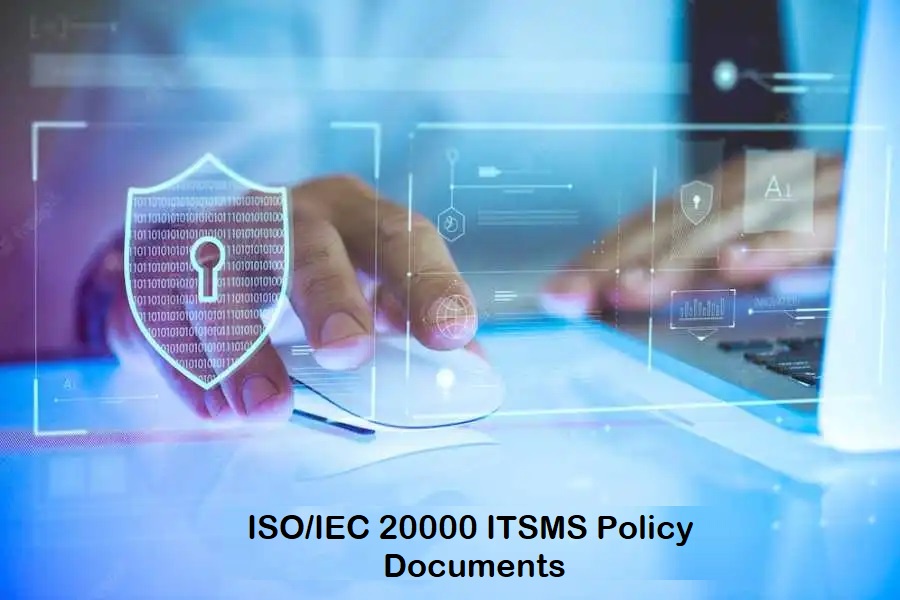By putting ISO/IEC 20000-1 standards into practice, a company can enhance its ability to provide services by increasing and improving customer trust and fostering a robust service foundation. Organizations that are structured by ISO/IEC standards will be better equipped to plan resources and responsibilities, provide higher-quality services, embrace a continuous improvement culture, and increase productivity and efficiency. Adhering to ISO/IEC 20000 certification would facilitate compliance with other comparable standards and laws since it is structurally aligned with other management system standards.
A document known as the service management system (SMS) policy offers top-level direction on how the company will handle service management. The goals and overarching philosophy of the service organization are outlined in the SMS policy. Senior management has given it approval, and every employee uses it as a guide to help them behave. The process of putting a service management system (SMS) into place requires developing an SMS policy. Other SMS components, such as the service catalogue, service level agreements, and procedures, can be developed on top of the SMS policy. Another essential component for expanding the service plan is the SMS policy. To make sure the SMS policy is relevant to the evolving needs of the company, it should be evaluated and updated regularly.
- Defining the scope of the SMS
A service management system (SMS) is a set of guidelines and protocols used to oversee services. It covers techniques for organizing, creating, implementing, running, and enhancing services. An organization may choose to put in place an SMS to improve productivity or adhere to industry norms. Upon deciding to deploy an SMS, a company must specify the system's parameters.
- Creating a scope statement is one method of defining an SMS's parameters. A scope statement is a written document that outlines the project's parameters. A description of the services that are and are not in the system should be included. A list of necessary resources and an implementation schedule should also be included in the scope statement.
- The creation of a service portfolio is an additional method for defining the reach of an SMS. A list of all the services a company provides is called a service portfolio. It also contains a synopsis of each service, along with its goals and advantages. Organizations can use the service portfolio to determine which services to include in their SMS.
- After an SMS's scope has been established, it is crucial to create management guidelines and protocols. The seamless operation of the system and the provision of services would be enhanced by these policies and procedures.
- Establishing service-level agreements
Formal contracts that outline the acceptable service level are known as service level agreements or SLAs, and they are signed by customers and service providers. A service level agreement (SLA) aims to specify the lowest acceptable level of service that the client may anticipate from the supplier. SLAs are a crucial component of Service Management Systems (SMSs) since they offer a means of monitoring and evaluating the performance of the service provider. Because they offer a means of gauging the performance of the service provider, SLAs are crucial for SMSs. SMSs can detect instances in which the service provider is falling short of the customer's expectations by keeping an eye on their performance. By altering the way the supplier provides services, this information can be leveraged to raise the standard of service.
SLAs can also be applied to raise client contentment. For instance, a consumer can utilize the SLA to hold the service provider responsible if they are dissatisfied with the quality of service they are getting. SLAs assist in ensuring that service providers satisfy the needs of their clients by ensuring that services are delivered at a satisfactory level.
- Creating and maintaining service catalogues
One essential part of the service management system (SMS) is the service catalogue. It lays out the expectations for service delivery and gives a succinct and clear summary of the services that the SMS offers. A well-functioning service catalogue will:
- Clearly state the services that the SMS provides
- Specify the requirements for the provision of services
- Assist in guaranteeing the consistent delivery of services
- Implementing continuous improvement processes
It is imperative to continuously improve the procedures to maintain a high-quality service. This is particularly true for service management systems (SMS), which must continuously adjust to shifting user demands and environmental changes. Continuous improvement procedures can be implemented in SMS policy to help guarantee the system's long-term efficacy and efficiency. The ISO 20000 policy document can be continuously improved in several ways. The Deming Cycle, commonly known as the Plan-Do-Check-Act (PDCA) cycle, is one such strategy. This cycle offers a methodical approach to finding and implementing system changes.
- Defining roles and responsibilities
The process of planning, developing, providing, and enhancing services to satisfy client needs is known as service management. An organization can manage its service business with the aid of a service management system (SMS), which is a collection of procedures and policies. The tasks and responsibilities of the people and organizations engaged in service management are outlined in the SMS policy. Additionally, it offers guidelines for how service management ought to be carried out within the company. Organizations may better plan, create, deliver, and enhance their services with the aid of service management. They also make it possible for service providers to monitor and summarize customer satisfaction. Service-level agreements (SLAs), service portfolios, and service catalogues are examples of common service management tools.
Source: https://itsms20000procedures.wordpress.com/2023/12/05/what-are-the-critical-aspects-of-the-iso-20000-it-service-management-system-sms-policy/


No comments yet